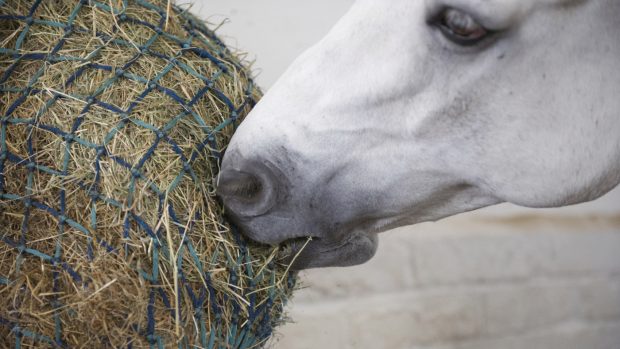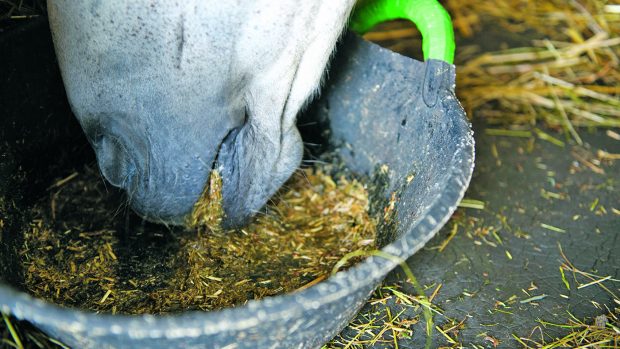Richard Brooks and his father Geoff run Eurobale, a leading supplier of big bale haylage in Europe.
For many years they bred high quality sport horses from their Manor Farm Stud.
How did you get into haylage?
About seven years ago we were tired of not being able to source good quality, clean and consistent hay for our horses, while our income from arable farming was beginning to decline.
As we were in the prime grass growing area of Nottinghamshire, we investigated the large-scale production of horse forage as an option for the farm business. In our first year, we grew 400 tonnes and this year we will harvest nearly 10,000 tonnes.
Why do people buy haylage?
Large yards ofhigh quality horses want dust-free, consistent forage all year round. What¨s more, the product can be stored outside and is more user-friendly than having to soak large amounts of hay ¨ it takes us much less time to feed our own horses now than it did before when we were soaking hay.
Nutritionally, what’s haylage got going for it?
When haylage first came on to the market, it was quite moist and very rich. We’ve tended to go for drier, high-fibre, low-energy variations, akinto moist hard hays. You need the moisture to reduce the dust that causes respiratory allergies.
Users are focused on fibre, energy and mineral content, and we have seen a recent trend back to more traditional grasses such as timothy as the base of the haylages.
When do you make it?
We will harvest from the beginning of June until mid July. The secret is to spread your grass species and planting dates so that the same quality product is harvested throughout the six weeks of harvest. We test the product before it’s cut to check it is at the target nutrient value.
People sometimes forget that, unlike compound horse feeds, haylage is only grown and harvested in the summer and then stored for use in the winter. Therefore weather and ground conditions at haylage-making affect the whole year’s quality.
What about organic haylage?
We tried it, but it was full of weeds and the clods of manure we had put on as fertiliser.
What is haylage’s biggest misconception?
There are two: one, that it could cause botulism – a throwback to the early days of big bale cattle silage; and two, that it will blow your horse’s brains – a legacy of the nutrient-rich varieties on the market over a decade ago.
Haylage is different now – it’s drier and more like hay in nutrient value and so is less likely to blow a horse’s brains out. Botulism only occurs in soaking-wet, soil-contaminated silages. Clostridium botulinum, the organism causing botulism, can’t survive in dry haylage.
Do you hunt off haylage?
Yes, ad lib, but it’s not a complete wonder feed. Our horses do need hard feed too, with the amount of hunting we do. We use it now as we used hay before, but you can only do that if the nutrient delivery is right – you couldn’t do it with a rich haylage, or I’d be a master dumped from his horse!




